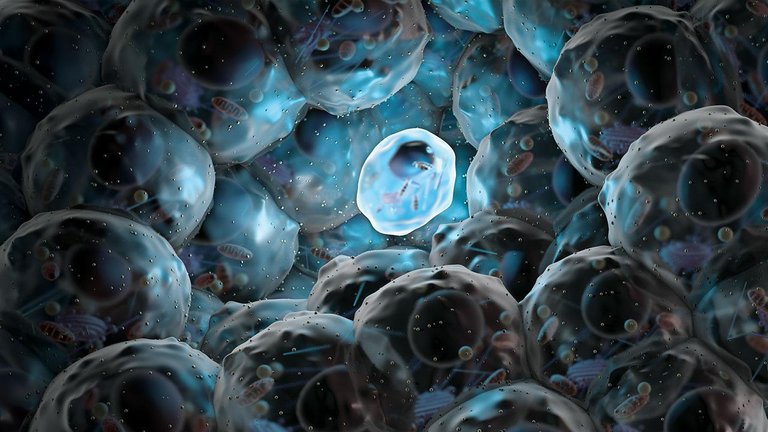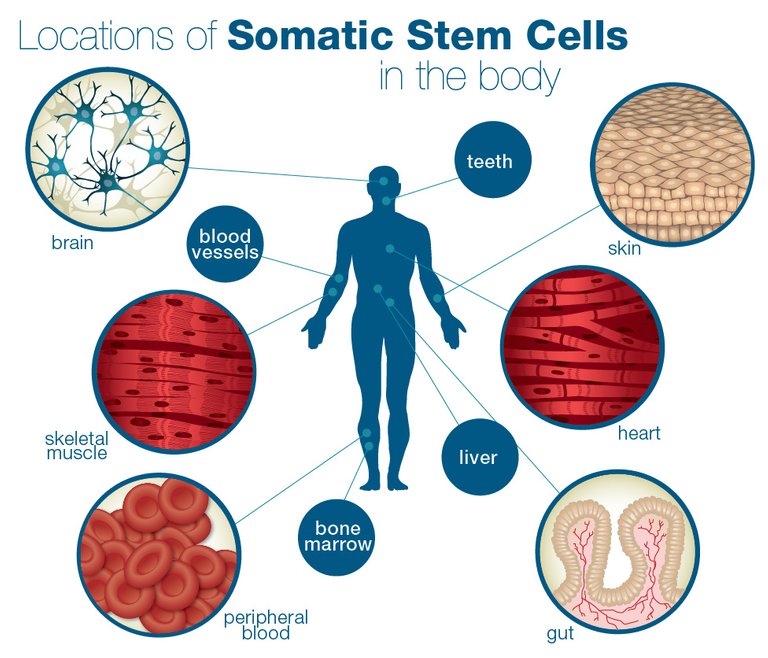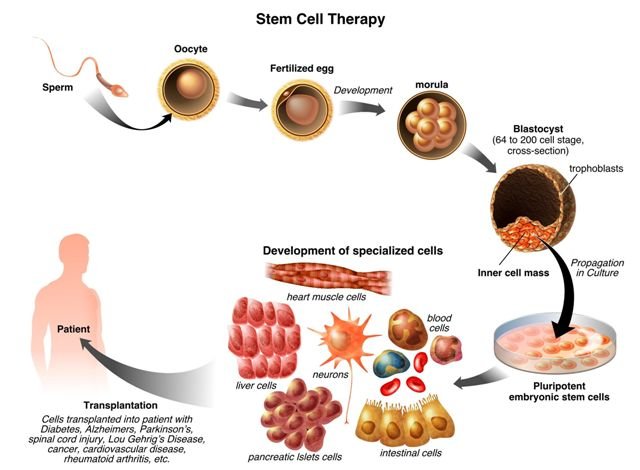Stem cells are a class of undifferentiated cells that are able to differentiate into specialized cell types. Commonly, stem cells come from two main sources:
1- Embryos formed during the blastocyst phase of embryological development (embryonic stem cells).
2- Adult tissue (adult stem cells).
Both types are generally characterized by their potency, or potential to differentiate into different cell types (such as skin, muscle, bone, etc.).
Adult or somatic stem cells exist throughout the body after embryonic development and are found inside of different types of tissue. These stem cells have been found in tissues such as the brain, bone marrow, blood, blood vessels, skeletal muscles, skin, and the liver. They remain in a quiescent or non-dividing state for years until activated by disease or tissue injury.
Adult stem cells can divide or self-renew indefinitely, enabling them to generate a range of cell types from the originating organ or even regenerate the entire original organ. It is generally thought that adult stem cells are limited in their ability to differentiate based on their tissue of origin, but there is some evidence to suggest that they can differentiate to become other cell types.

Embryonic stem cells are derived from a four- or five-day-old human embryo that is in the blastocyst phase of development. The embryos are usually extras that have been created in IVF (in vitro fertilization) clinics where several eggs are fertilized in a test tube, but only one is implanted into a woman.
Sexual reproduction begins when a male's sperm fertilizes a female's ovum (egg) to form a single cell called a zygote. The single zygote cell then begins a series of divisions, forming 2, 4, 8, 16 cells, etc. After four to six days - before implantation in the uterus - this mass of cells is called a blastocyst. The blastocyst consists of an inner cell mass (embryoblast) and an outer cell mass (trophoblast). The outer cell mass becomes part of the placenta, and the inner cell mass is the group of cells that will differentiate to become all the structures of an adult organism. This latter mass is the source of embryonic stem cells - totipotent cells (cells with total potential to develop into any cell in the body).
In a normal pregnancy, the blastocyst stage continues until implantation of the embryo in the uterus, at which point the embryo is referred to as a fetus. This usually occurs by the end of the 10th week of gestation after all major organs of the body have been created.
However, when extracting embryonic stem cells, the blastocyst stage signals when to isolate stem cells by placing the "inner cell mass" of the blastocyst into a culture dish containing a nutrient-rich broth. Lacking the necessary stimulation to differentiate, they begin to divide and replicate while maintaining their ability to become any cell type in the human body. Eventually, these undifferentiated cells can be stimulated to create specialized cells.

Hi! I am a robot. I just upvoted you! I found similar content that readers might be interested in:
http://www.medicalnewstoday.com/info/stem_cell
thank you
Cite sources. Do not directly copy.
ok
thank you